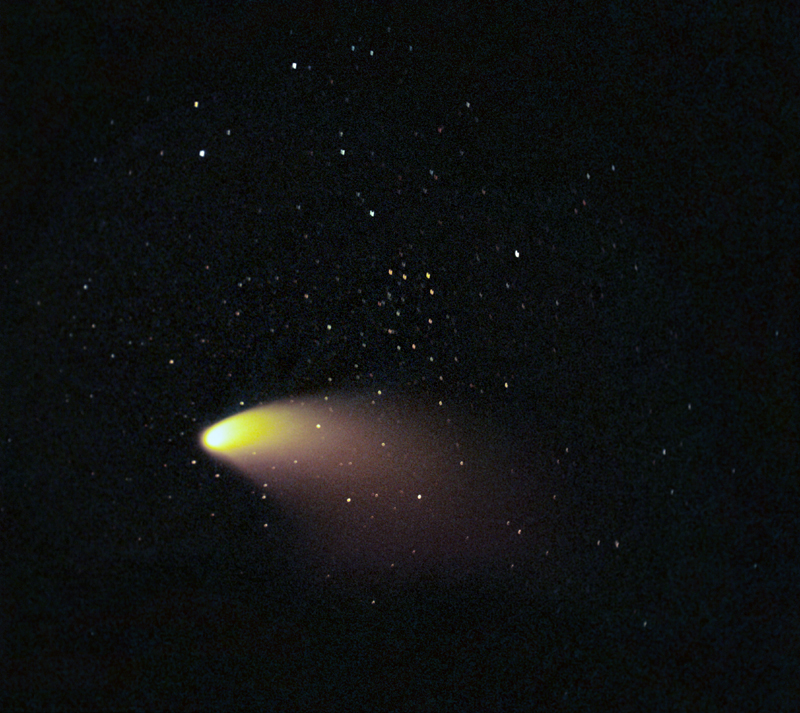
Comet Hale-Bopp. May 5, 1997.
5 minutes exposure. Fuji Super HG V 400 film. 6" f/3.75 Schmidt-Newtonian telescope.

May gave southern hemisphere observers their best views of comet Hale-Bopp. During this time, the comet was rapidly moving southwards, however it was also moving closer to the Sun. As a result, the comet appeared to move almost parallel to the western horizon, gaining very little altitude as it moved south. These photographs shown here illustrate just how close to the horizon the comet remained. In the photograph above, notice the colour of the comet. The strong reddish tint is a result of the low altitude of the comet when the photograph was taken. This is very noticeable in the three photographs below, taken on the same night. The comet takes on more of a reddish tint as each photo was taken due to the decreasing altitude.
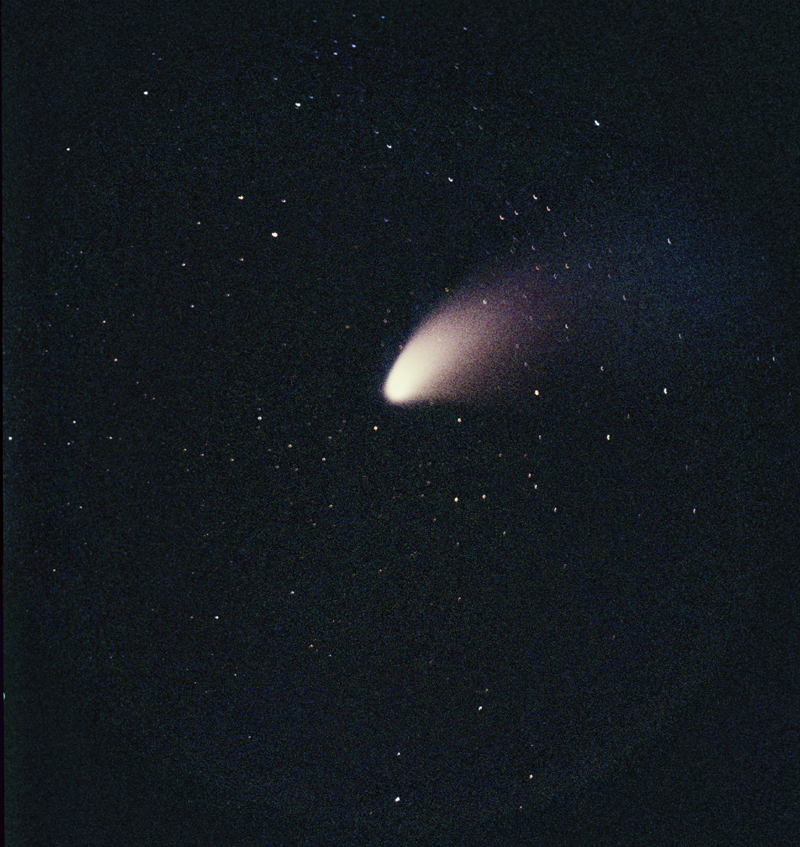
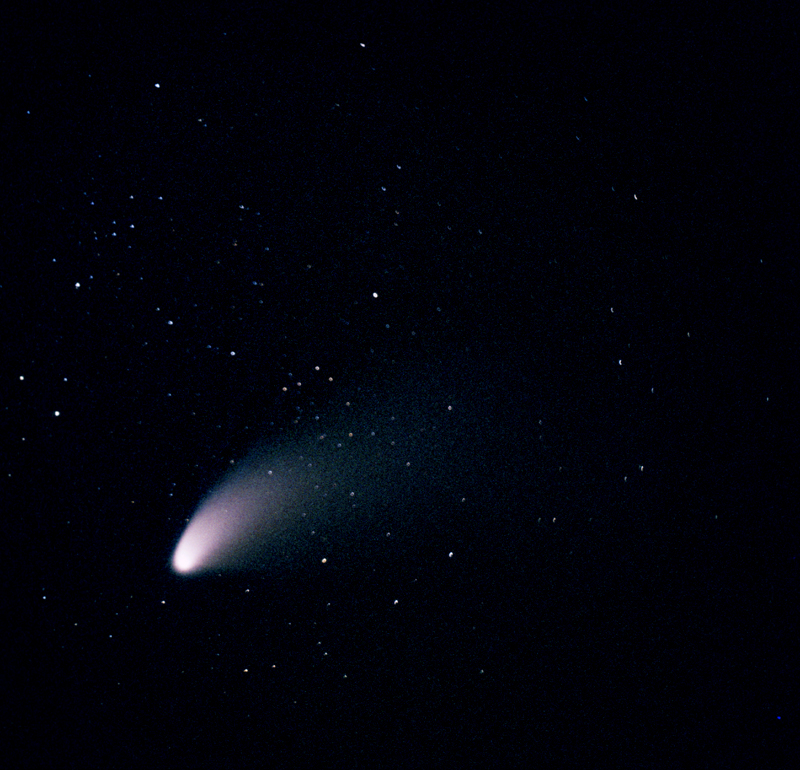
Comet Hale-Bopp. May 6, 1997.
5 minutes exposure. Fuji Super HG V 400 film. 6" f/3.75 Schmidt-Newtonian telescope.
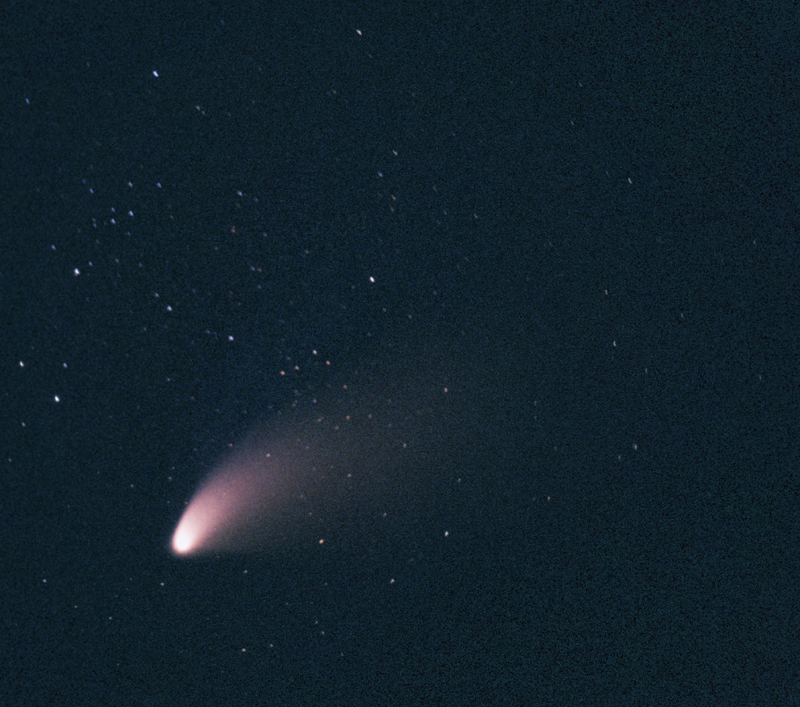
Comet Hale-Bopp. May 6, 1997.
7 minutes exposure. Fuji Super HG V 400 film. 6" f/3.75 Schmidt-Newtonian telescope.
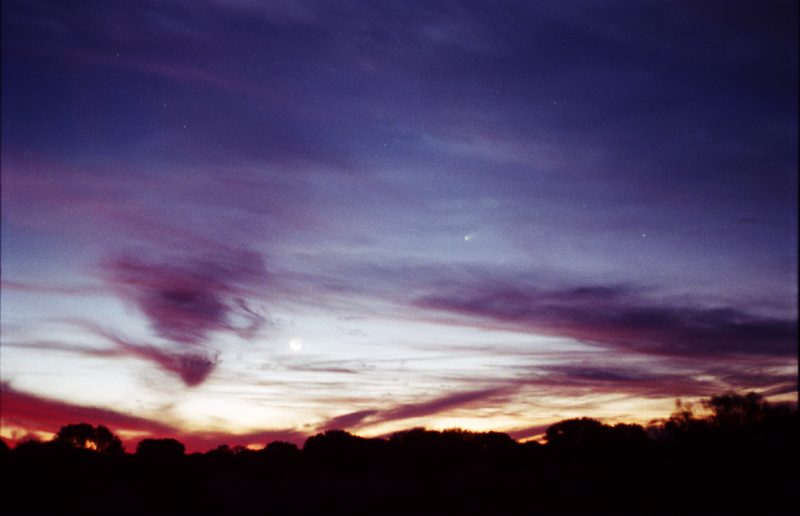
On May 8, the cresent Moon appeared in the western sky below the comet. There were also some scattered thin clouds present. These made for a great photo opportunity as the twilight deepened. Throughtout the month, the comet remained very bright and had a prominent, and strongly curved dust tail.
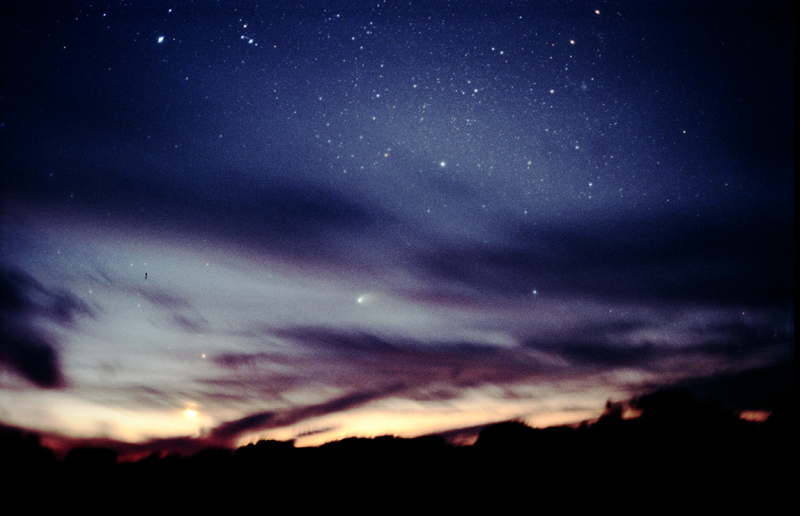
Comet Hale-Bopp. May 8, 1997.
5 minutes exposure. Fuji Super HG V 400 film. 50mm f/2 Nikkormat camera.
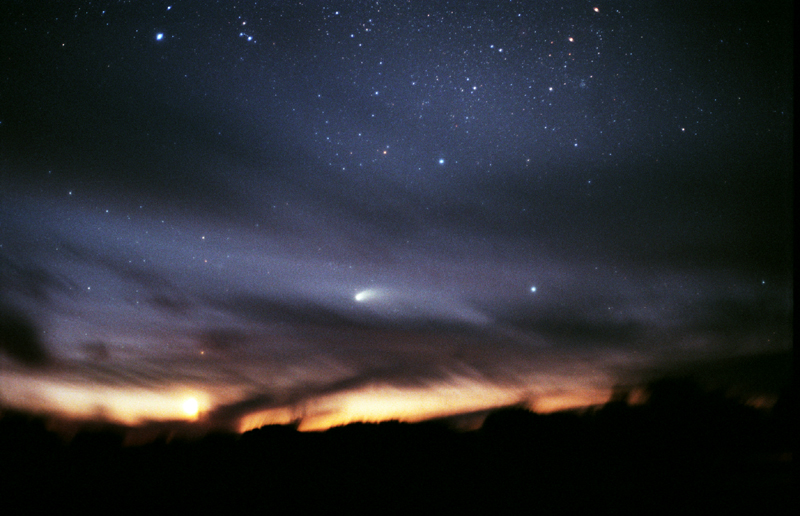
Comet Hale-Bopp. May 8, 1997.
5 minutes exposure. Fuji Super HG V 400 film. 50mm f/2 Nikkormat camera.
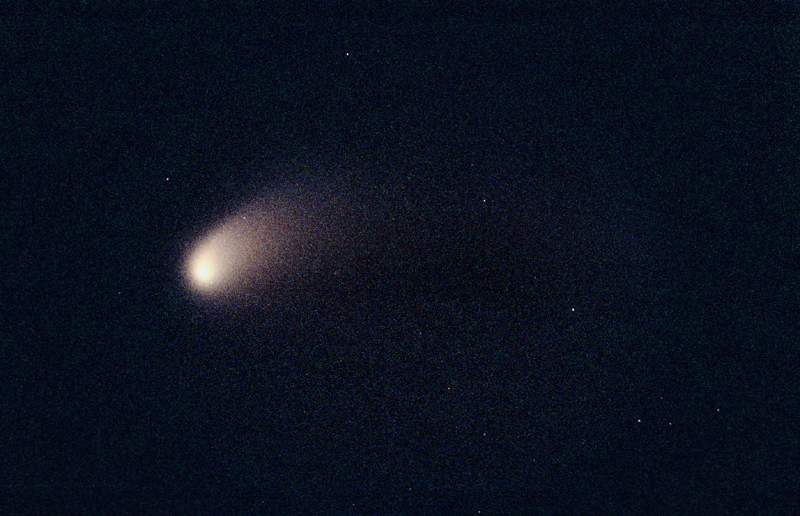
Comet Hale-Bopp. May 8, 1997.
5 minutes exposure. Fuji Super HG V 400 film. 5" f/5 Refractor at prime focus.
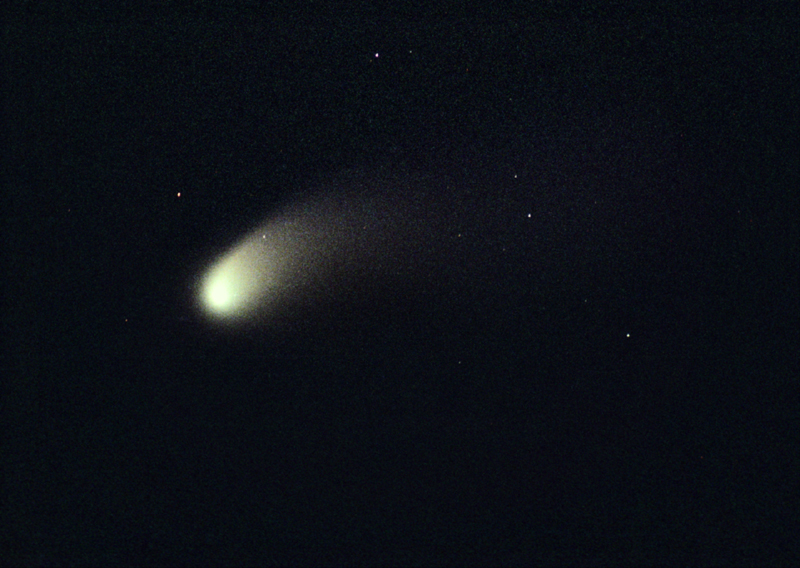
Comet Hale-Bopp. May 8, 1997.
10 minutes exposure. Fuji Super HG V 400 film. 5" f/5 Refractor at prime focus.